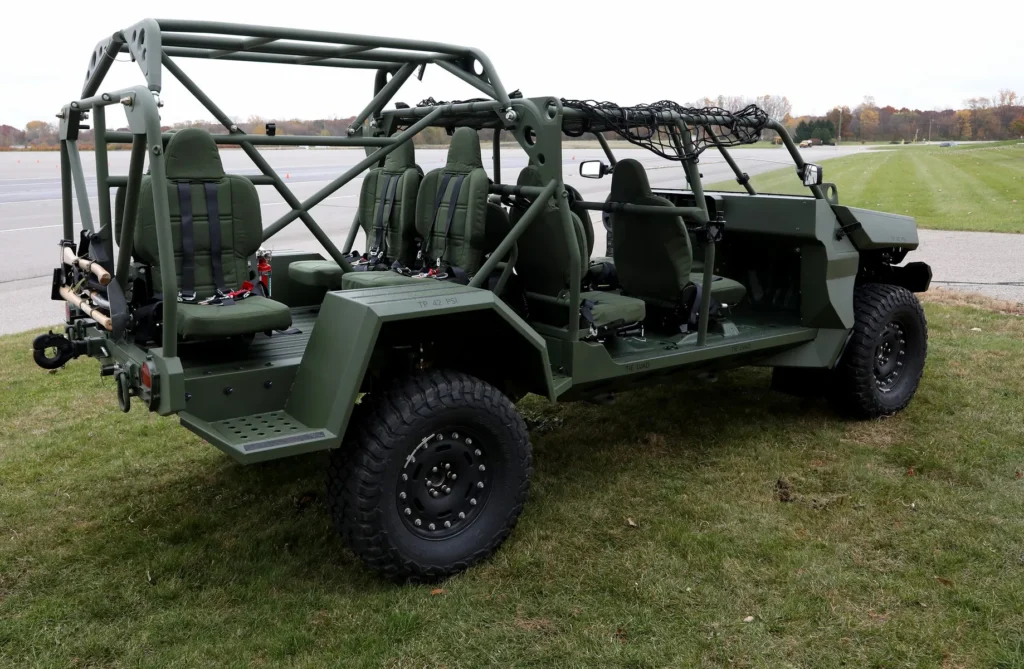For decades, the Humvee (High Mobility Multipurpose Wheeled Vehicle) was the U.S. Army’s go-to utility vehicle. It appeared in everything from action movies and GI Joe cartoons to real-life combat missions in Iraq and Afghanistan. But now, the Army is officially closing that chapter. In a move that marks the end of an era, the Army swaps Humvee for a modern, faster, and more cost-efficient vehicle — the Joint Light Tactical Vehicle (JLTV).
This shift is more than just about retiring an old model; it reflects changes in modern warfare, military strategy, and budget efficiency. In this article, we’ll explore why the Army made this decision, what the JLTV brings to the table, and what it means for the future of U.S. military ground transport.
The End of the Iconic Humvee Era
The Humvee has served the U.S. military since the 1980s. It replaced the original World War II Jeep and became a symbol of American military strength and mobility. With its wide wheelbase, rugged design, and ability to carry troops and supplies across difficult terrain, the Humvee was the backbone of military ground vehicles for nearly four decades.
But time caught up with the legendary vehicle. The modern battlefield demands vehicles that are lighter, faster, more protective, and adaptable to changing threats — especially improvised explosive devices (IEDs), which proved to be deadly against older Humvee models.
Why the Army Swaps Humvee for JLTV
The decision to replace the Humvee wasn’t sudden. The Army had been reviewing alternatives for years. Here are the key reasons why the Army swaps Humvee for the JLTV.
Survivability and Protection
The biggest criticism of the Humvee in modern conflicts was its lack of armor. As roadside bombs became more common in places like Iraq and Afghanistan, soldiers riding in Humvees faced serious danger. The JLTV offers better protection, with built-in armor capable of withstanding small arms fire and blasts — without needing bulky add-on kits.
Speed and Mobility
Despite its rugged look, the Humvee was not fast or agile by modern standards. The JLTV, on the other hand, is built for speed and versatility. It features an independent suspension system that allows it to handle off-road terrain much more efficiently while moving faster than the Humvee ever could.
Modern Technology Integration
JLTVs come equipped with modern electronics, advanced navigation, and communication systems that can integrate with drones, surveillance systems, and networked combat units. The Humvee was simply not designed for the digital battlefield.
Cost Efficiency
Though the JLTV costs more per unit (roughly $400,000 compared to the Humvee’s $70,000 to $150,000), it’s cheaper to maintain in the long run. It also reduces the need for separate armored variants, making logistics and supply chains more efficient.
Meet the JLTV: The Humvee’s Successor

The Joint Light Tactical Vehicle (JLTV) was developed by defense contractor Oshkosh Defense. After a decade of testing, revisions, and field trials, it finally earned the Army’s trust. Here’s what makes the JLTV a worthy replacement.
Key Features of the JLTV
- Top speed: Over 70 mph (112 km/h)
- Weight: 14,000 to 22,000 lbs depending on configuration
- Armor: V-shaped hull for blast protection
- Payload: Can carry up to 5,100 lbs
- Technology: Digital dashboard, adaptive suspension, weapon system compatibility
- Variants: 4-seat and 2-seat models, with utility and close combat configurations
These features allow the JLTV to serve multiple roles — from troop transport to reconnaissance to command and control — all while keeping soldiers safer and better connected on the field.
What Happens to the Old Humvees?
The Army has over 100,000 Humvees in service, not including those used by other branches like the Marine Corps or given to allied nations. So what will happen to them?
- Phased Retirement: The Army plans to slowly retire Humvees rather than remove them all at once. Some will be used for training, others for non-combat roles.
- Foreign Military Sales: Many Humvees may be sold to allied nations at discounted rates.
- Police and Civilian Use: In the past, surplus Humvees have been given to law enforcement agencies and even converted for civilian use.
A Cultural Shift: No More GI Joe Trucks
When the Army swaps Humvee for the JLTV, it’s not just a logistical decision — it’s also a cultural moment. The Humvee was deeply embedded in American pop culture. From Hollywood films like Black Hawk Down and Transformers to military video games and children’s toys, the Humvee was the face of the U.S. military.
Replacing it signals a shift not only in battlefield tactics but in how the military presents itself to the public. The sleek, armored, and tech-heavy JLTV represents a more modern, data-driven military era, focused on efficiency and survivability.
Reactions From Soldiers and Experts
Soldiers on the Ground
Troops who have already used the JLTV report overwhelmingly positive feedback. Many praise its improved ride comfort, better armor, and modern controls. For soldiers who spent years riding in Humvees, the upgrade is welcome.
“It feels like going from a 90s pickup truck to a Tesla,” one soldier commented in a recent field trial.
Military Analysts Weigh In
Defense analysts also see this as a positive step. According to defense expert John Pike:
“The JLTV is not just a new vehicle; it’s a whole new approach to tactical ground mobility. It’s modular, flexible, and future-ready.”
Global Impact and Future Developments
The decision to retire the Humvee and embrace the JLTV could influence military modernization efforts around the world. Allied forces often model their equipment purchases on U.S. decisions. Countries like the UK, Poland, and Japan have already expressed interest in acquiring JLTVs or similar vehicles.
In the coming years, we might also see:
- Electric or hybrid JLTV models
- AI integration for battlefield navigation
- Autonomous convoy capabilities
Humvee vs. JLTV: A Quick Comparison
| Feature | Humvee | JLTV |
|---|---|---|
| Top Speed | 55 mph | 70+ mph |
| Armor Protection | Light armor, add-ons needed | Built-in armor, blast resistant |
| Cost per Unit | $70,000–$150,000 | ~$400,000 |
| Modern Tech | Limited | Advanced navigation & comms |
| Versatility | Moderate | High (Multiple roles supported) |
| Comfort & Safety | Basic | Improved ride, better protection |
Conclusion: A New Chapter for U.S. Military Mobility
The Army swaps Humvee not just because it can, but because it must. The threats faced by today’s military are vastly different from those of the 1980s, and the tools must evolve accordingly. The JLTV is not only a step forward in terms of safety, speed, and tech — it’s a statement about where military logistics is heading.
The retirement of the Humvee might make action figure collectors and 90s kids nostalgic, but for today’s soldiers, it’s a step into a safer, more modern future. While the Humvee earned its place in history, the JLTV is now ready to carry that legacy forward — faster, stronger, and smarter.
Do Follow USA Glory On Instagram
Read Next – Shift in Supreme Court Religious Cases Raises Big Questions






